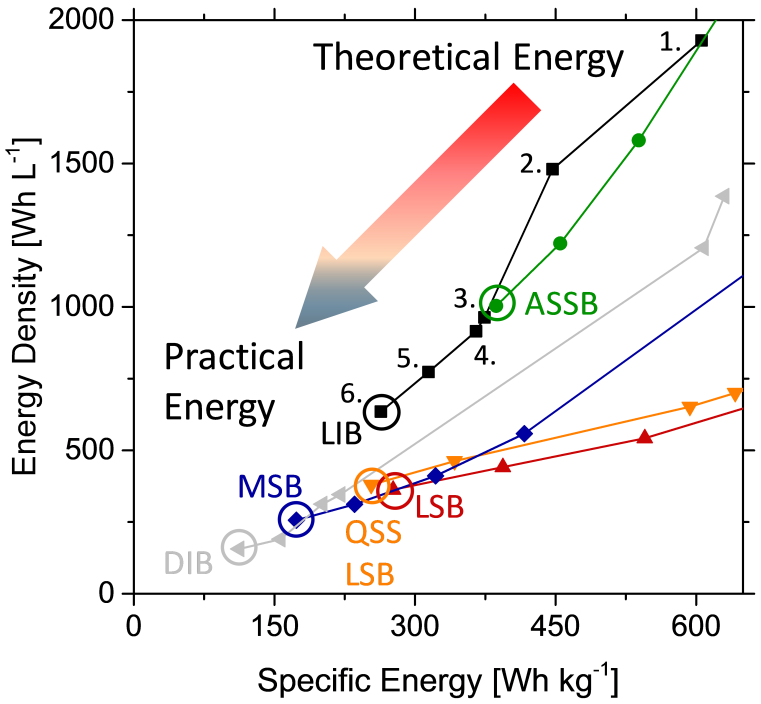Estimating the realistic potential of emerging alternative battery technologies
Realizing electrochemical energy storage at large scale poses one of the main technological challenges of this century. Both science and industry intensively explore numerous alternative rechargeable battery concepts besides the dominating lithium ion battery (LIB). Often, the novel battery concepts promise a very high theoretical energy per mass or volume. However, these values exclude numerous relevant parameters of practical battery cells and thus might translate very differently into practically achievable energy values. As a result, the use of theoretical energy or capacity values (mostly only at the material level), which are commonly quoted for emerging battery chemistries, might extremely overestimate the realistic potential of these systems in comparison to LIBs.
Researchers of MEET Battery Research Center (University of Münster) and Helmholtz-Institute Münster (HI MS; Forschungszentrum Jülich) set up a study to identify and illustrate critical parameters of emerging alternative battery technologies. By providing a tool to calculate the energy values of six different battery technologies with different assumptions made evident, this study aims for a more transparent assessment and comparison of current and evolving battery technologies.
The study by Johannes Betz, Georg Bieker, Dr. Paul Meister, Dr. Tobias Placke, Prof. Dr. Martin Winter and Dr. Richard Schmuch was published in the journal “Advanced Energy Materials”.
DOI: 10.1002/aenm.201803170


